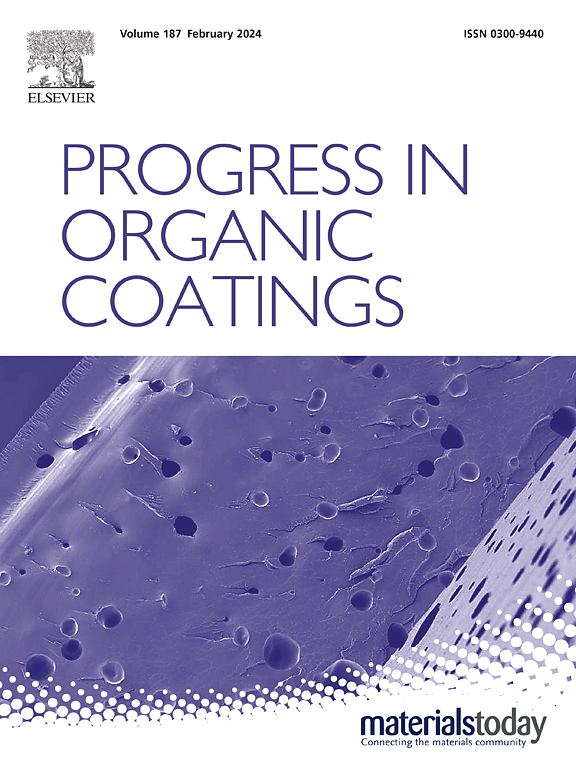Enhancing corrosion protection and luminescence in bio-based polyurethanes with fluorescent azine segments
IF 6.5
2区 材料科学
Q1 CHEMISTRY, APPLIED
引用次数: 0
Abstract
Bio-based polyurethanes (PUHs) derived from castor oil (CO) have emerged as promising materials due to their mechanical resistance and chemical inactivity; they have found tremendous application growth. The physical and chemical properties of polyurethane (PUH1–3) made from castor oil polyol (COP) and various polyols, such as 1,4-phenylene bis (2,4-dihydroxy benzylidene) azine (PDaz) or polyol of (epoxy castor oil (ECO) with PDaz) (Eaz) with hexamethylene diisocyanate (HMDI), are investigated and compared for their light emission and corrosion inhibition of mild steel (MS). Thermogravimetric analysis (TGA), scanning electron microscopy (SEM), X-ray diffraction (XRD), and Fourier transform infrared spectroscopy (FT-IR) are used to assess the differences in characteristics of different PUH forms. As a result of incorporating fluorescent hard segment azine PDaz into the polymer with various preparation strategies, luminescent non-conjugated polyurethane derivatives (PUHs) have been obtained straightforwardly in high yields, affording PUHs with advantageous emission and corrosion inhibition properties. According to the photoluminescence (PL) study, simply changing the strategy by which a fluorescent material is incorporated can either increase the intensity of the emitted color or cause it to shift to a longer wavelength as the PUHs exhibit excitation dependency behavior. The corrosion inhibition applications of PUHs were discovered to be very effective and varied depending on the procedure of molecule preparation. PUH3 exhibited a corrosion inhibition efficacy of about 97.6 %, and these compounds display properties of mixed-type corrosion inhibitors. The intriguing results of these compounds indicate promising coating applications characterized by outstanding strength and optimal adherence and open up promising avenues for using these compounds in luminous coatings.
求助全文
约1分钟内获得全文
求助全文
来源期刊

Progress in Organic Coatings
工程技术-材料科学:膜
CiteScore
11.40
自引率
15.20%
发文量
577
审稿时长
48 days
期刊介绍:
The aim of this international journal is to analyse and publicise the progress and current state of knowledge in the field of organic coatings and related materials. The Editors and the Editorial Board members will solicit both review and research papers from academic and industrial scientists who are actively engaged in research and development or, in the case of review papers, have extensive experience in the subject to be reviewed. Unsolicited manuscripts will be accepted if they meet the journal''s requirements. The journal publishes papers dealing with such subjects as:
• Chemical, physical and technological properties of organic coatings and related materials
• Problems and methods of preparation, manufacture and application of these materials
• Performance, testing and analysis.
 求助内容:
求助内容: 应助结果提醒方式:
应助结果提醒方式:


